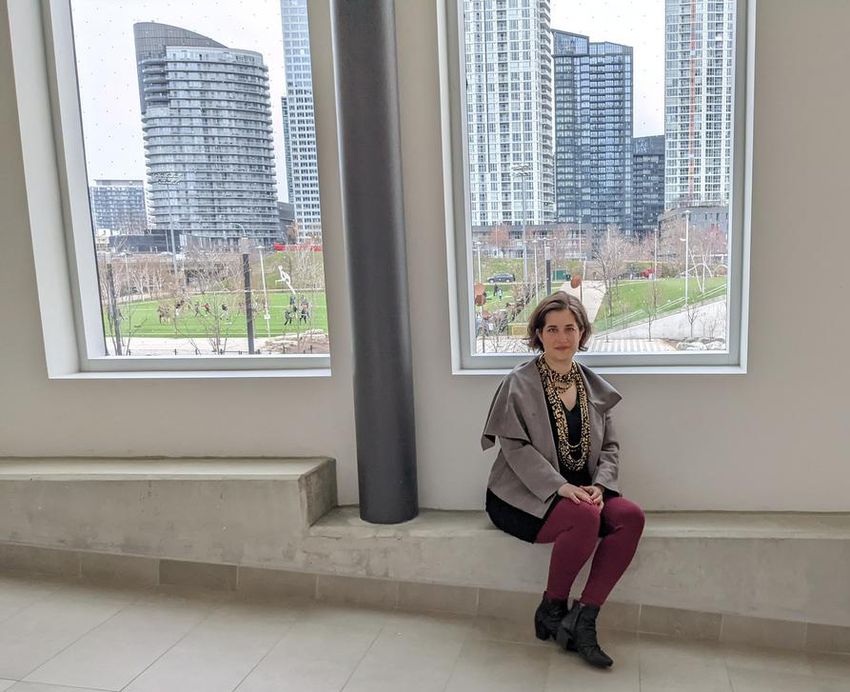“When I first moved to Toronto about a decade ago,” Tel Aviv-born, Paris-educated architect and urban designer Naama Blonder recalls, “the one complaint I heard the most was about the ugly condos with cold, monstrous features.”
Sound familiar? With condo construction continuing to dominate redevelopment around the city, many fear more soft blocks of steel and green glass will follow. But among developers and city planners, signs of point to a new focus being put on not only what new buildings themselves will look like, but also how they can best fit into existing neighborhoods and streetscapes.
Fifteen years ago, Toronto established the Design Review Panel, a group of design and landscape architects, transportation engineers and experts in heritage and environmental sustainability, who voluntarily evaluate development proposals and tell the builders as well as city planners how to improve them. (The city also has other panels specializing in waterfront and transit infrastructure development proposals.)
Emilia Floro, Toronto’s director of urban design and head of the department to which the Design Review Panel provides feedback, says the panel looks at both the esthetics of new buildings as well as their compatibility and fit with the “public realm” around them – streets , parks, open spaces.
“We’re really focused on … the highest quality of life for people using (them),” Floro says, “and achieving a high quality of architecture, and landscape architecture that incorporates heritage preservation and environmental sustainability.”
Floro points to One Bloor Street East as an example of “substantial improvement” through the Design Review Panel process. The new tower, on the southeast corner of Yonge and Bloor, was reshaped at street level to better match Yonge Street’s narrower and multiple-unit retail face. Sidewalk space was enlarged and enhanced and provides better weather protection, while the building’s top was refined with an eye toward its “significant impact upon the skyline,” Floro says.
King Toronto, a massive condo development now under construction on King Street west of Spadina, promises to be a dramatic new addition to the face of the city. Inspired by Moshe Safdie’s Habitat housing complex built for Expo ’67 in Montreal, it stacks terraced units into four main “mountains,” with each suite facing at a 45-degree angle. This gives the complex an undulating appearance, in contrast to the usual flat wall-and-windows façade.
Ground-level retail will frame wide passageways leading into courtyard of more shops, rigged with a mist-producing “cloud-maker” for hot summer days. A new public park will mark the south flank.
King Toronto will incorporate several of the street’s classic red-brick heritage buildings into its decidedly modern motif. The development’s Danish architect, Bjarke Ingels, told the Star in an interview when the development was first announced in 2018, that he understands the importance of Toronto places on preserving city streetscapes.
“You have to tread carefully when you have existing qualities like we do at King Street,” he said.
“There should be a way where the two can successfully co-exist. By not confusing what’s old and what’s new, you preserve the past and reinvent it and contribute something toward the future.”
For Naama Blonder, who is the co-founder of Toronto’s Smart Density design firm (which recently won the 2022 Ontario Association of Architects award for best emerging practice), that compatibility between new developments and their surroundings is key. “Design (of the building) matters, design of the public realm matters, design of the ground floor and of retail matters,” she says. “All of the things that build your experience as a pedestrian will matter far more than just the height of the building or the number of windows.”
Blonder says development in Toronto “is very bottom-line-driven,” and pressures to cut costs have led to the dominance of steel and glass facades. “It’s the most feasible form of construction,” she acknowledges, “but it’s unnatural to the human eye to see the same window hundreds of times in a tall building with hundreds of units. In nature, you don’t have anything that repeats itself like that.”
In Blonder’s view, the Ontario College of Art and Design building (completed in 2004) and the Brookfield Place atrium (1992, also home to the Hockey Hall of Fame) are some of the most recent innovative, yet already dated, standouts. “Eighty per cent of the architecture in this city is not ‘star’ flashy buildings,” she says.
However, Blonder looks forward to the completion of the Well, the mixed-use residential/retail/office complex and future home of the Toronto Star under development on Wellington Street west of Spadina, praising its design, which includes a “beautiful, two- storey, high-ceilinged food court.”
For similar reasons, she thinks the redevelopment of the former Honest Ed’s site at Mirvish Village (to feature a new market area and brewery) holds promise, as does the Waterworks condo on Richmond Street West, which incorporates a large food hall into the Art Deco -inspired public works building constructed in the 1930s.
It’s a fact of life in Toronto that most major new builds will be condos. Blonder says because of residential zoning’s dominance in the city, along with the ongoing demand for new housing, it’s imperative that the city strike the right balances between new projects’ design and their integration into their communities.
“With Boston or New York,” Blonder says, “the character is not of one building. It’s mostly the streets of the city that create the identity, the brand that you think of.”
JOIN THE CONVERSATION
